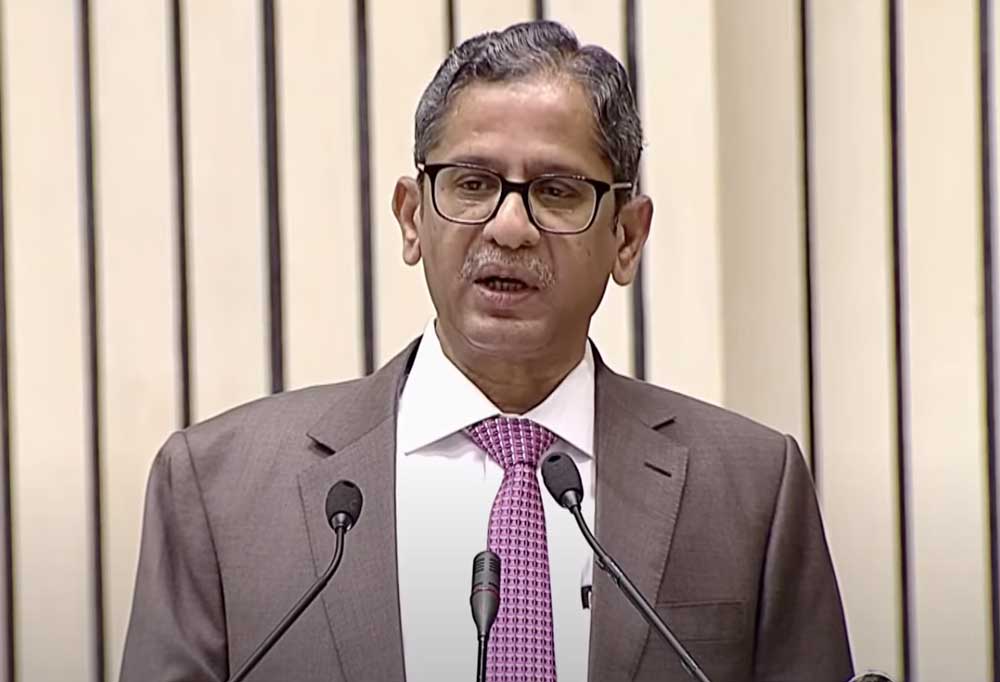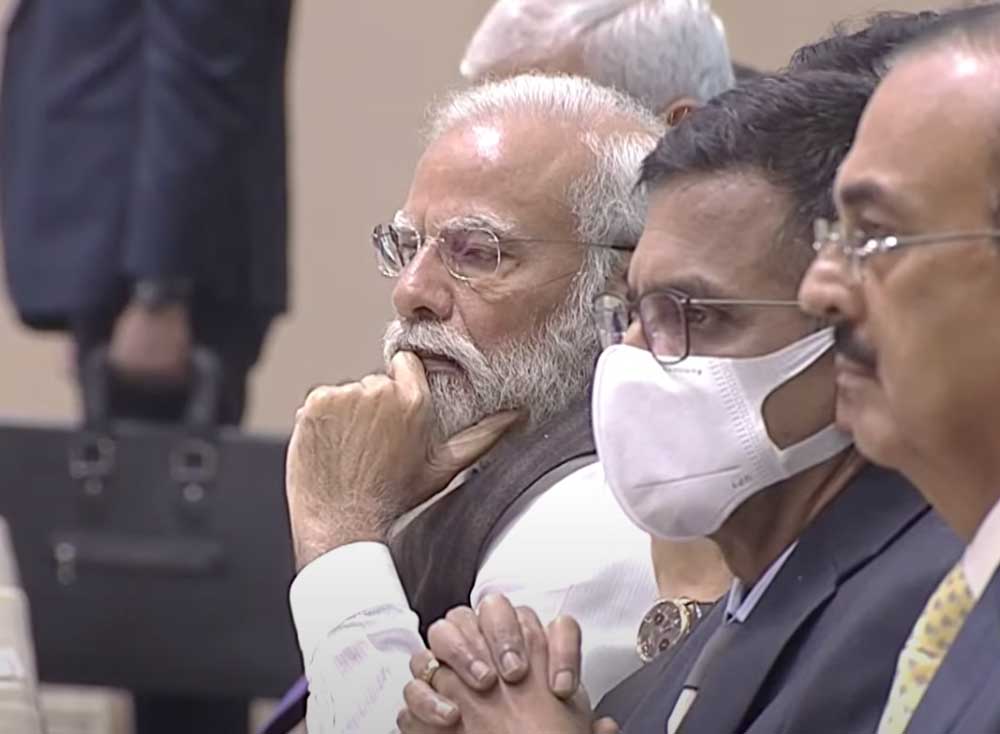Speaking on November 26, the Constitution Day, Chief Justice of India N.V. Ramana touched on a wide range of subjects that concern the Judiciary.

The three branches of the government and their accountability
The Chief Justice said that the Constitution required accountability as an integral part of the legislature and the executive but consciously kept the Judiciary on a different pedestal. The makers of the Constitution trusted the men and women who would adorn the bench, he said.
The CJ said that securing social, economic, and political justice is the state’s collective responsibility and not just that of the Judiciary.
Any deviation by the executive or the legislature from the path laid by the Constitution places an additional burden on the Judiciary, said CJ Ramana.
There is no ‘Executive vs. Judiciary’ situation
While the Laxman Rekha drawn by the Constitution is sacrosanct, there are instances when courts are compelled to pay attention to the unresolved grievances in the interest of justice, said the CJ, explaining that the Judiciary only nudges the executive and does not usurp its role.
The Chief Justice said that attempts to project the judicial interventions and observations as targeting of one institution by another are totally misplaced.
The understanding of the Constitution
Lamenting the lack of constitutional literacy amongst a majority of the people, the CJ appreciated the government for bringing in a video series to educate the children about the Constitution. The CJ hoped that such material would be made available in all Indian languages to reach larger audiences.
The Constitution has undergone 105 amendments, and a transformed judiciary is seen today, said the CJ.
Public Interest Litigations
Even a letter from the common man could become a Public Interest Litigation, said the Chief Justice.
Although there is a risk of misuse, the enormous good achieved through the progressive expansion of constitutional jurisprudence must be acknowledged, he said.
The Challenges ahead and the solutions
Protracted litigations and pendency are a concern, acknowledged CJI Ramana.
The supreme court is using technology to overcome such challenges, and as to the lower courts, a structural change is required, along with creating more posts, he said.
The administration must also sensitize the police personnel and other agencies to cooperate with the courts, added the CJ.
Due to the non-availability of matching grants from some states, these changes aren’t taking place, pointed out the Chief Justice, using the occasion to request Prime Minister Narendra Modi to build state of the art complexes for the lower Judiciary.

Attacks on Judiciary
There are physical attacks on judicial officers besides the attacks in media, particularly social media, said the Chief Justice. Central agencies must deal with this effectively, he said.
Reforms
The Indianization of the Judiciary is required, said the Chief Justice.
Encouraging public participation and the use of local languages in courts are mentioned as possible reforms by CJ Ramana.
Appreciation for the government
The government has cleared several vacancies, appreciated the Chief Justice.
However, there are just 4 female judges on the bench right now, said the CJ, wishing to see more female representation in the future.